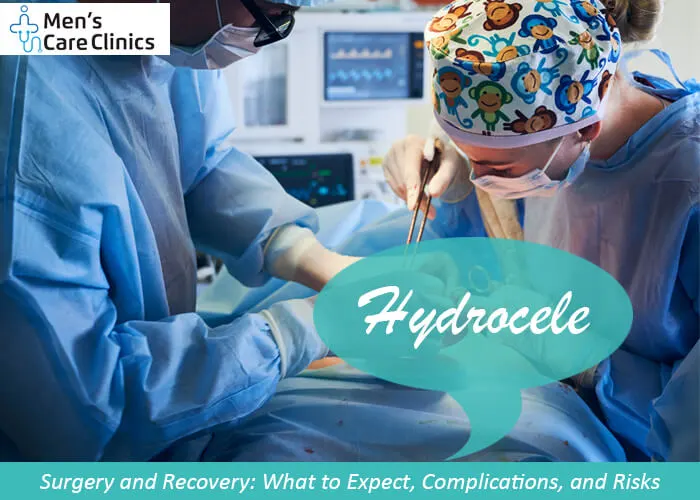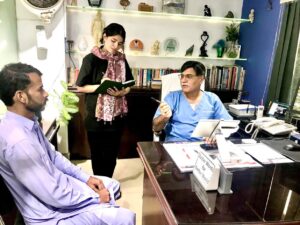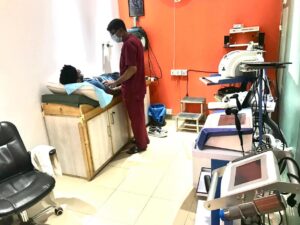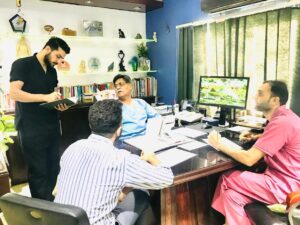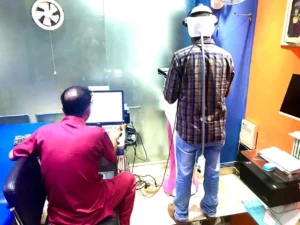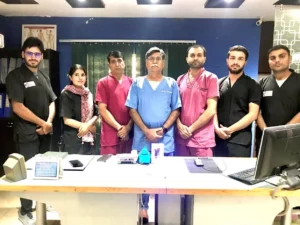If you and your partner have been struggling to conceive for more than a year, your healthcare provider may suggest certain tests, such as a semen analysis, to determine the cause of your infertility. A semen analysis evaluates the overall quality and the quantity of your sperm (“sperm count”).
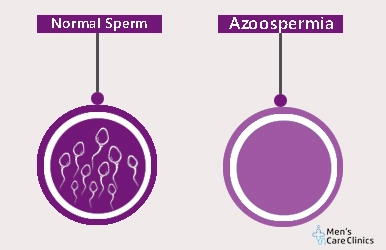
Azoospermia
Azoospermia, also called “semen without sperm,” is a medical condition in which a man’s semen does not contain any sperm.
There are two types of azoospermia:
- Obstructive.
- Non-Obstructive.
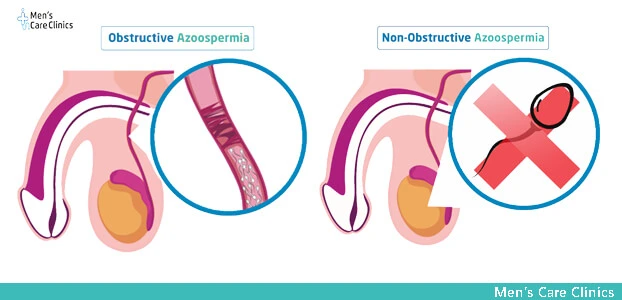
Obstructive Azoospermia: a condition where the absence of sperm in semen is caused by an obstruction in the reproductive tract (ejaculatory duct, epididymis or vas deferns), preventing sperm from reaching the urethra from where it slips out of the body
Non obstructive Azoospermia: A situation, in which the reproductive system is not blocked, but the testes or testicles can’t make sperm. It is defined by an absence of sperm in the semen, not caused by a blockage but by problems with sperm production.
Sperm Production Process
The sperm production process starts with the development of spermatogonia, cells that multiply and produce sperm. These cells go through mitosis, dividing and making more spermatogonia to ensure a constant supply.
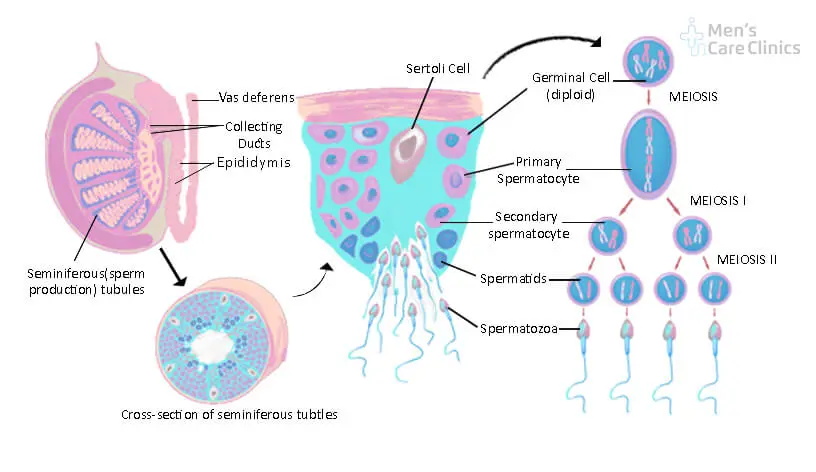
After that, some of the spermatogonia change in a process called meiosis. Meiosis is made up of two divisions, and the result is four haploid cells called spermatids. These spermatids have half as many chromosomes as other cells in the body.
The next step is spermatogenesis, during which the spermatids change in many ways. The genetic material gathers together to make the head, and a tail (flagellum) grows to give the mature sperm movement.
Sertoli cells, helper cells in the testes, are crucial to the whole process. They feed and support the growing sperm cells and help the mature spermatozoa move into the lumen of the somniferous tubules, which is where sperm is made.
Sperm cells move from the seminiferous tubules to the epididymis when fully grown. In the epididymis, sperm cells grow and learn to swim, which is important for fertilization.
The process of making sperm takes between 64 and 72 days. It is regulated by pituitary hormones, specifically follicle-stimulating hormone (FSH) and luteinizing hormone (LH). In reaction to the body’s needs, these hormones make sperm production go in the right direction.
In short, making sperm is a complicated and tightly controlled process that ensures a steady supply of developed, working sperm cells for reproduction.
How Common is?
Azoospermia is relatively rare, occurring in about 1-2 % of the male population.
Causes of Azoospermia
A non obstructive source or an obstruction may be the reason for azoospermia.
Nonobstructive Source includes:
- Hormonal imbalances,
- Genetic abnormalities,
- Testicular injury,
- Medications,
- Chemotherapy,
- Radiation therapy,
- Certain medical conditions (like diabetes and kidney failure mumps).
Obstructive source includes:
- Inflammation reproductive tract.
- Congenital abnormalities (absent Vas deferens, Seminal Vesicle or Ejaculatory Duct).
- Infections (STD, Mumps, and Orchitis).
- Previous surgeries,
- Vasectomy.
Azoospermia Symptoms
Azoospermia doesn’t usually have any particular symptoms or signs. It is usually found when a guy has a fertility test or when he and his partner have trouble getting pregnant. But it’s important to remember that the underlying causes of azoospermia can sometimes be symptoms or signs linked to hormonal imbalances or the specific condition that causes the lack of sperm. For example, hormonal changes can cause less hair on the face or body, low sex drive, or breast enlargement. You might also have other symptoms if you have a genetic disorder or a certain medical situation.
Treatment of Azoospermia
Azoospermia treatment depends on the underlying cause. Here are some potential treatments:
Treatment for obstructive azoospermia
Where the absence of sperm in semen is due to a blockage in the reproductive tract, the following treatment options may be considered:
- Surgical methods can be used to remove the blockage or go around it. (This could mean rejoining the vas deferens).
- Microsurgical Epididimal Sperm Aspiration (MESA), sperm is taken straight from the epididymis using a surgical microscope. The sperm can then be used for IVF (in-vitro fertilization) or ICSI (intracytoplasmic sperm injection).
- Testicular Sperm Extraction (TESE), In cases where sperm is absent in the epididymis, a small tissue sample is taken from the testes using a surgical procedure. The sample is then checked for sperm, which can be used for IVF or ICSI.
- In certain cases, electrical stimulation can be used to induce ejaculation in men with spinal cord injuries or neurological conditions causing ejaculatory dysfunction. The semen collected can be assessed for the presence of sperm.
Treatment for Nonobstractive Azoospermia
Where the absence of sperm in semen is due to problems with sperm production, the following treatments can include:
- Hormone therapy: If hormone changes are causing problems with sperm production, you may be given hormone-balancing drugs.
- Microdissection Testicular Sperm Extraction (micro-TESE): During this surgery, small pieces of testicular tissue are removed with the help of a microscope. The goal is to find the parts of the testes that have healthy sperm that can be used in IVF or ICSI, or other methods of assisted reproduction.
- Sperm Retrieval Using Assisted Reproductive Techniques: Even if a person has non-obstructive azoospermia, there are still times when sperm can be found in the testes. Techniques like testicular sperm aspiration (TESA) and testicular sperm extraction (TESE) can be used to get sperm straight from the testes in IVF or ICSI.
- Donor Sperm: If sperm retrieval is impossible or doesn’t work, donor sperm can be used for artificial insemination or assisted reproductive methods like IVF or ICSI.
Prevention
Some reasons of azoospermia are out of a person’s control, so it may not always be possible to stop it from happening. But men can take the following steps to improve their reproductive health and lower the chance of certain factors that can lead to azoospermia:
- Living a healthy life can support overall reproductive health. This includes having a balanced diet, working out regularly, dealing with stress, avoiding smoking, and drinking too much alcohol or tobacco.
- Take care to keep the testes from getting hurt or injured. This can mean wearing safety gear when doing sports or certain jobs with a chance of getting a testicular injury.
- Try to spend as little time as possible around poisons, chemicals, and radiation that could affect sperm production. Follow safety rules and procedures when working with dangerous materials or places that could harm your health.
- If you have underlying medical conditions or chronic diseases, communicate closely with your healthcare provider to manage them well. Sperm production can be affected by changes in hormones or autoimmune diseases.
- If you have any symptoms or signs of a problem with your reproductive health, such as changes in your sexual function or a chemical imbalance, see a doctor immediately. Finding and treating underlying issues as soon as possible can help stop problems from worsening.
- If your family has a history of genetic diseases or problems with getting pregnant, you might want to get genetic advice before trying to get pregnant. This can help find possible risks and give advice on how to plan a family.
Author:
Dr. Aslam Naveed
Men’s Care Clinics








